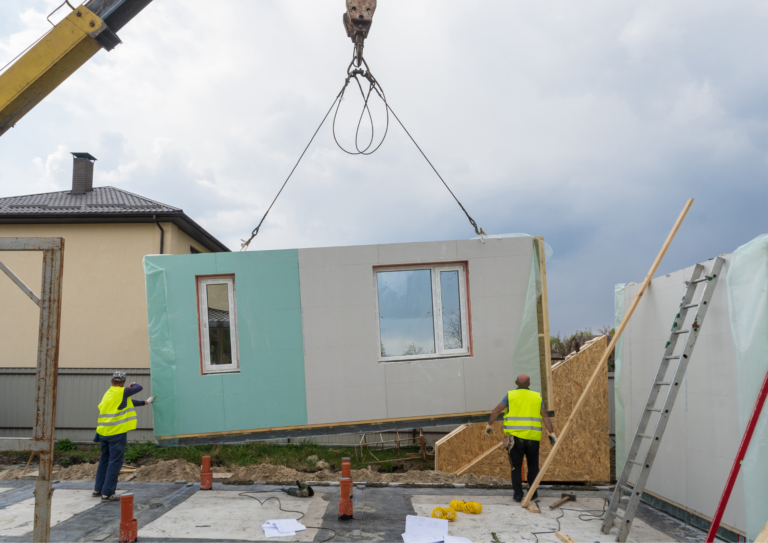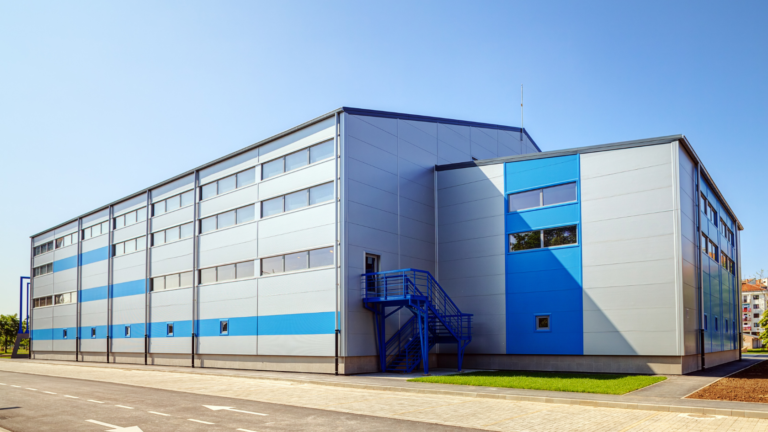Have you ever considered how bridges, buildings, and other massive structures can handle loads without collapsing? One of the secrets lies in a kind of concrete known as prestressed concrete. This construction material is engineered to endure weights and pressures making it an excellent option, for bigger projects. In this blog, we will discuss some key advantages of prestressed concrete.

Understanding Prestressed Concrete
Prestressed concrete is a type of concrete that undergoes pre-compression before being used. The pre-compression helps counteract the concrete’s stresses when subjected to loads like vehicle weights on a bridge or occupant loads in a building. By applying this force, the concrete can withstand loads and stresses compared to regular concrete. Here is an image of pre-stressed concrete beams.

Structural Advantages of Prestressed Concrete
- A key benefit of prestressed concrete is its enhanced load-bearing capacity. Due to pre-compression it can handle more loads than simple concrete. This feature is crucial for bridges and tall buildings where the structures’ weight itself can be substantial.
- Another advantage is its weight and size. Since, prestressed concrete yields thinner structural components. This could result in savings, on both materials and labor costs.
- Prestressed concrete also boasts strength making it better at withstanding bending or breaking when under a load. This quality is especially crucial, for structures that face loads like wind or seismic forces.
- Additionally, prestressed concrete provides enhanced resistance due to its compressed nature reducing the likelihood of cracking or breaking under seismic pressure. Hence it’s a choice for buildings in earthquake areas.
Durability Advantages of Prestressed Concrete
- In terms of durability benefits, prestressed concrete outshines simple concrete in various ways.
- It offers protection against corrosion as the pre-compression minimizes cracks through which water and corrosive substances could seep in.
- Moreover, it shows resistance to fire and high temperatures by minimizing cracks that would otherwise allow heat infiltration hence reducing the risk of failure during a fire outbreak.
- Notably prestressed concrete boasts a lifespan and lower maintenance costs compared to concrete because of its reduced crack susceptibility leading to lesser maintenance needs throughout its life cycle.

Material Advantages of Prestressed Concrete
Furthermore, prestressed concrete presents advantages, over standard concrete materials. A major benefit is its cost efficiency. Even though the upfront expense of using prestressed concrete might be more, than concrete the savings, over time can be significant.
Prestressed concrete offers benefits due, to reasons, such as lower material and labor expenses along with quicker construction time. Since it can be utilized in sections compared to simple concrete, it demands less material and labor for installation. Moreover, its pre-compression allows for faster installation than concrete resulting in speedier construction processes and earlier project completions.
Advantages in Sustainability
- In addition to these benefits prestressed presents sustainability advantages over conventional concrete. One key advantage is its energy efficiency. The pre-compression feature reduces the energy required for both production and installation compared to concrete.
- Furthermore, prestressed concrete boasts a carbon footprint than concrete. This is attributed to factors like the use of carbon mixes and the decreased amount of materials and energy needed for manufacturing and installation.
- Lastly, prestressed concrete is both recyclable and reusable. Its pre-compressed nature enables cutting for reuse in projects thereby minimizing waste generation and preserving resources.
Applications of Pre-stressed Concrete
Prestressed concrete finds application across sectors including bridges, highways, buildings, skyscrapers, parking structures, stadiums as well, as tanks and silos.
Prestressed concrete for instance is frequently employed in building bridges and highways. This type of concrete that is pre compressed can bear the load of vehicles and traffic along, with forces, like wind and seismic activity.
Prestressed concrete is widely used in constructing buildings and skyscrapers due, to its ability to withstand loads and stresses making it a preferred option for structures. Parking, garages and stadiums also commonly utilize pre-stressed concrete for its capacity to support the weight of vehicles, occupants and dynamic forces like wind and seismic activities. Moreover, tanks and silos in construction often incorporate pre-stressed concrete for its resilience against contents weight, internal pressure and various loads.
Conclusion
In summary, there are numerous advantages of prestressed concrete as compared to conventional concrete. These benefits include load-bearing capacity, lighter weight and smaller size improved flexural strength, better resistance, to activity protection against corrosion increased fire and heat resistance longer lifespan with lower maintenance costs, cost-effectiveness, energy efficiency reduced carbon footprint, as well as the ability to be recycled and reused. Despite some drawbacks and limitations associated with usage the advantages often surpass the drawbacks especially for large scale construction projects. With the rising demand for economical building materials the utilization of concrete is expected to become more prevalent, in the future.
Brickborne believes in accuracy and time construction without wastage of resources. We believe in economical and sustainable construction. With the advancing world, software is here to assist us in the construction field. Brickborne provides construction drawings as per codes of the region, 3D modeling, rendering, and animation walkthroughs of both interior and exterior, and quantity surveying and cost estimation. Choose us to change your dreams into reality as we say, Brickborne- We Design Your Ideas!





